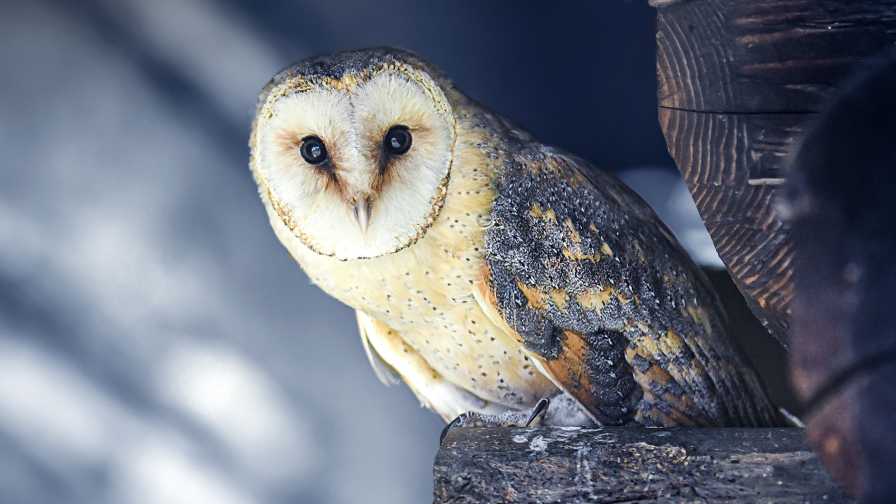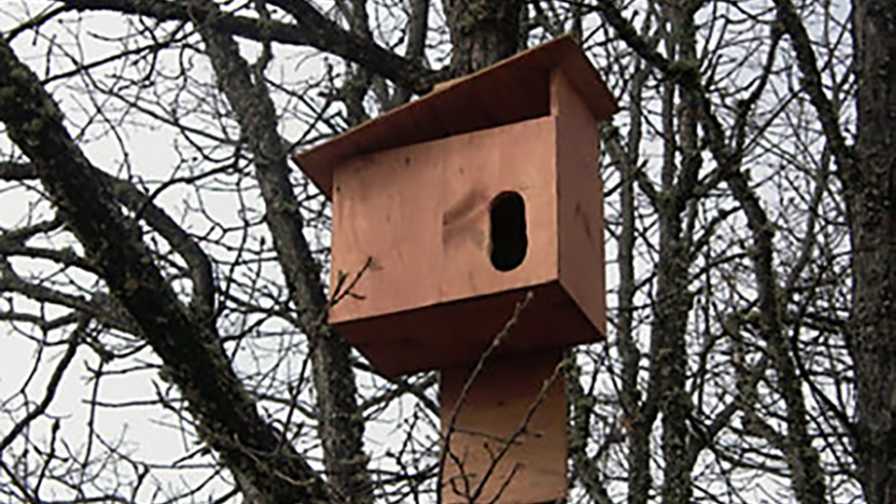How to Rid a Cherry Orchard of Gophers — the Natural Way

Got gophers in your cherry orchard? Owls’ talons are perfect for paralyzing gophers, preparing the rodents for their hungry young owlets.
Tim Dahle has been farming cherries for more than 40 years. If there’s one thing he wishes he’d known early on about gophers, it’s that old saying about diplomacy: The enemy of my enemies is my friend.
“We have many potential allies in nature, and building homes for those allies, like barn owls, is one of the best things we can do,” he says. “It’s something we can do, we can control. Coyotes might be more effective at limiting populations, but we can’t control coyotes.”
Dahle farms in The Dalles, OR, hence his business name, The Farmer in The Dalles. He grows 360 acres of tree fruit, mostly cherries, in three locations. The different locations, from 600 feet in elevation all the way up to 2,000 feet on the side of Mount Hood, allow him to vary harvest times. But gophers love
them all.
Dahle favors biocontrols for gophers. Although just a small percentage of his acreage is organically farmed, he prefers biocontrols because he likes working with nature and saving money. The best biocontrol of all is owls, who love feeding on gophers.
There are 12 species of owls found in Oregon, but only about two-thirds make their home there most of the year, and of those, he favors the barn owl most of all. “The resident barn owl is the best thing you can get. They tend to focus more on gophers than other owls,” he says. “They are also more likely to move into a manmade house than the other species.”
The owl that eats the most varmints, Dahle says, is the great horned owl, which will bring 20 gophers a night to a big clutch of owlets. Most owls are hunting to feed their young, so they hit a terrifically productive feeding spurt in early summer, when owlets are just reaching the juvenile stage.
“Once the owlets leave home later in the summer, they learn to feed themselves,” he says. “They’re like us, the adults don’t eat as much as the juveniles. A barn owl might eat only two or three a night; a great horned owl perhaps a half-dozen, though barn owls are more focused on gophers than other owls.”
The great horned owl also has a much wider array of prey, from a skunk down. While the largest owls may take prey of more than 5 pounds, the preferred prey is just a few ounces. All raptors only take prey they can immobilize by piercing or crushing with their talons.
“Then they finish them off with their beaks,” says Dahle. “They don’t like to expose their face in a fight.”
Growers mainly want the top gopher aggressors: barn, barred, and horned owls, the “three best friends of a farmer,” says Dahle. But it’s also important that their habitat overlaps agricultural lands well. For example, the northern spotted owl tends toward forests. The burrow owl more on prairies, not cropped lands.
HOME BUILDING
A variety of structures can make good homes for barn owls — any abandoned outbuilding, including their namesake barns, if they don’t have a lot of activity. Both barn owls and screech owls readily occupy structures that are correctly made for them, says Dahle, although it’s critical to be correct. Hole diameter, shade, and good ventilation are key factors. The hole should be about 2.5 inches for screech owls, 3.5 inches for barn owls. A house for barn owls should have at least 2 cubic feet. Drill holes on two walls so the air can move through and it won’t get too hot for the owlets.
Dahle says growers shouldn’t be discouraged if some of the new homes are not occupied. “Even 5% occupancy is OK — barn owls are that valuable,” he says. “A family of barn owls can really eat — five owlets, each three meals a night. A family of owls can eat thousands of varmints a year.”
One odd fact is that barn owls have been known to engage in bigamy, he says, and they will supply food for two nests with potentially eight owlets. They may be cheaters, but they are hard workers; it’s not unheard of for them to kill 20-plus gophers a night to feed both their families.
TRAPPING
When the owls aren’t enough, Dahle says he resorts to trapping. Locate the tunnels either by digging up their tell-tale mounds or with a metal probe. The key is to set the trap in the newer part of the gophers’ underground network, because that’s where they are currently patrolling most often.
“When you find mounds, look for ones with moisture, which is lost in just a couple of days,” he says. “So you want to use a fresh mound because that’s a newer, more actively used part of the network.”
Many growers just trap in the spring and fall when there is more activity. You may trap as many as 40 gophers an acre, he says, adding that his own record is just over 30. But while you might not get as many in other parts of the year, it’s worth it.
“If you can, every time you see a mound, go after it,” he says, “because that’s how you’re going to get on top of the problem.”
YOUNG ORCHARDS
Gophers can be extremely serious pests in establishing a young orchard. In machine planting, the tree planter creates a furrow, the tree is planted, then the wheels press the soil back down.
“But not pressed enough to slow down a gopher who goes down that furrow that the planter has formed,” Dahle says. “Mostly they eat the bark off the trunk of the tree, though they will eat the bark off the roots, too. And they learn that if they just go a little way down the furrow, they will find more of their favorite food, the tender bark of a young tree.”
Dahle says he hasn’t had many problems in his newly planted orchards because they use an auger and don’t create a plowed furrow. Gophers might still eat a few of the trees, but their feeding is more sporadic. “The gopher doesn’t have a sense of where the next tree is,” he says. “If there’s a furrow, he knows where to get his next meal.”










